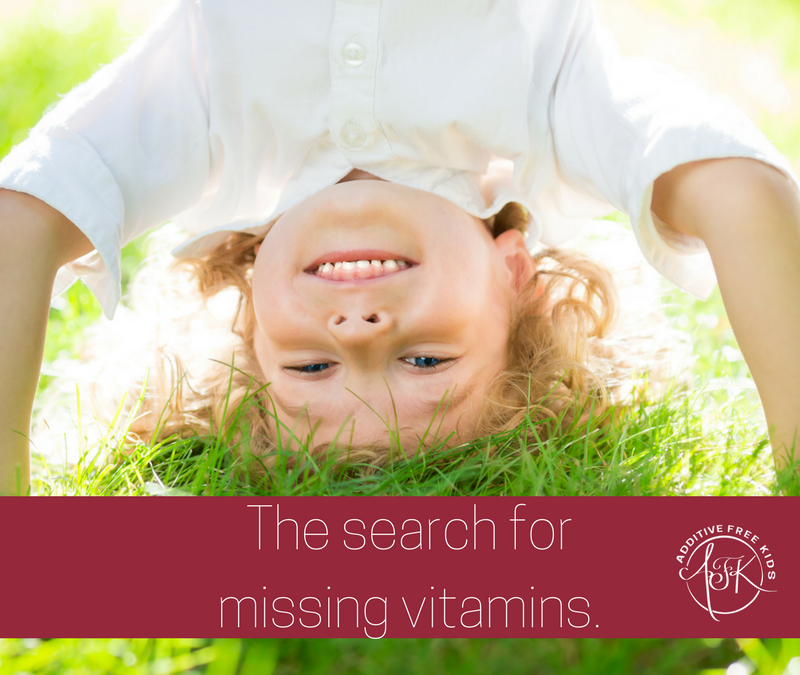Is your child irritable? Do they have smelly feet? Are they a ‘fussy eater?’ Are they having difficulties in learning? Do they seem to catch every bug that is going around?
All of these could be signs to let you know that your child may simply have low levels of key nutrients. Perhaps they could be missing vitamins.
You can consume all the nutrient rich food in the world, however if your body is unable to absorb and utilise this food, you sadly won’t feel the benefits.
Multiple factors could be involved in the malabsorption, such as poor function of the gastrointestinal tract, insufficient stomach acid production, stress, or even something as simple as not taking time to chew food properly. This all means that the body now needs to work harder to break down and draw out the nutrients.
To top this off, much of the food that we are consuming does not contain the level of nutrients that it did in the past. Present day soil is no longer as nutrient dense as it once was, leading our food to have lowered levels of nutrients. Add in the long transport times, storage and holding times at the supermarket for our fruit and vegetables and there is some natural loss of nutrition in fresh foods.
Children are particularly susceptible to nutrient deficiency or insufficiency due to their rapid periods of growth and development.
Inadequate nutrients in the body can affect a child’s learning ability, focus, mood, sleep and appetite, and have long lasting effects on both the child and the family.
Here are some of the most common childhood nutrient deficiencies in Australia…
Iron
Surprise surprise, this is becoming more of a problem in Australian children. Considered a serious concern in children in less developed countries, it is disturbing to see it occurring more in children here as an insufficiency. On a blood test, kids will just scrape through into the OK reference range, or they may have just slipped off.
Iron is an essential mineral, which means it is a nutrient that the body cannot make and needs to be sourced from food.
Insufficient iron in the body creates oxygen depletion within the cells which decreases their capability and this includes all the cells within the brain! Iron is also stored in our muscle cells as myoglobin and it is essential for energy production within our muscles. Iron is involved in the production of neurotransmitters, such as dopamine and serotonin, both of which are involved in producing a sense of calm, focus and happiness. It is also involved in cell growth, repair and immune function.
So, as you can see, a child that is low in the iron would find it very hard to think clearly due to a lowered level of oxygen to the brain; their mood would be compromised and they would find it hard to stay focused due to an imbalance in serotonin and dopamine. They may be irritable and also hyperactive. All of these factors make a huge impact in the learning capacity and social interactions of a child.
Other signs of insufficiency include:
Fatigue
Difficulty sleeping
Irritability
Hyperactivity
Poor appetite
Behavioural outbursts
Impaired growth in children
Impaired cognitive, intellectual and language development due to impaired oxygen to the brain
Difficulty concentrating
Reduced memory
Difficulty in the learning environment
Restlessness
Restless Legs
Muscular cramps
Headaches
Susceptible to catching colds and flu
Signs of insufficient nutrients may also be seen in the skin:
Pale skin, due to a lowered level of oxygen to the cells
A bluish ring underneath the eyes
Dry or cracked skin
Brittle or soft nails
Swollen tongue
Pale conjunctiva
Nutrient sources of Iron
The most absorbable form of iron comes from animal sources such as poultry, red meat, organ meat, and seafood. Many plant based foods contain iron, however are not absorbed as efficiently. These include almonds, apricot, avocado, sunflower and pumpkin seeds, green leafy vegetables, black strap molasses.
Combining iron containing foods with foods high in vitamin C, such as capsicum, cabbage and citrus fruits will help to enhance the absorption within the body.
Zinc
Zinc is required for cell growth and development, immunity and antioxidant protection within the body. Zinc supports the brain and nerve functions, detoxification processes and reproductive functions. Zinc is involved in digestion, wound healing, bone growth, appetite regulation, taste sensitivity and helps to maintain the integrity of the gastrointestinal tract. As you can see, this is a very useful nutrient.
Children that are labelled as fussy eaters may actually be low in zinc.
As mentioned, zinc plays a role in the senses, including taste and smell, so children that are low in zinc will not appreciate how tasty and appealing that healthy food is. Zinc also plays a role in leptin regulation, which is a hormone involved in appetite control. When that is out of whack appetite can be unusually low.
Because of zinc’s role in maintaining the integrity of the gastrointestinal tract, lowered levels of zinc can lead to food intolerances, skin reactions and inflammation in the body and brain.
Signs that may indicate zinc insufficiency include:
Poor growth in children
Reduced learning ability
Reduced resistance to infections
Behavioural and cognitive disorders
Impaired sense of smell or taste
Insomnia
Bad dreams
Irritability
Food allergies or intolerances
Nervousness
Restlessness
Poor memory
Headaches
‘Fussy eating’
Reduction in appetite
Sensitivity to light
Sore throat
Mouth ulcers
Itchiness of the ear canal
Diarrhoea
Skin signs to look out for:
Skin rashes
Cracks in the corners of the mouth
Dry skin
Scaly skin
Fungal skin infections
Poor wound healing
Smelly feet
White marks on nails
Weak nails
Nutrient sources of Zinc
Seafood is a particularly high source of zinc, with oysters being the highest.
Children and oysters aren’t generally a match made in heaven – but they may surprise you! Oysters can be flavoured and cooked to cater for a variety of different taste buds.
Beef, lamb and pork are also very high in zinc.
Plant based sources include spinach and other green leafy vegetables, pumpkin seeds, nuts, chickpeas, mushrooms and raw cacao.
Magnesium
Magnesium is essential for over 300 enzymatic processes within the body! Without adequate magnesium in the body you can see what an effect it may play. It has a key role in all cellular functions that support muscle and nerve function, energy production, calcium metabolism, cardiovascular function and bone formation within the body.
When we talk about kids behaviour, magnesium is a heavy weight nutrient. This mineral dampens the release of excitatory chemical messengers (neurotransmitters) throughout the body, leading to a reduction in hyperexcitability throughout the entire nervous system.
Magnesium regulates the amount of calcium that is absorbed in the body, as well as other key nutrients like zinc, copper and vitamin D. so it has a major role in creating strong teeth and bones. Magnesium is vital in the muscles of the body where it also plays a role in producing ATP for energy production.
With so many roles in the body, magnesium is needed in abundance. In times of growth, vigorous exercise or stress, magnesium is utilised at an even faster rate, meaning insufficiency rates are high in not just our little people.
Some signs that may indicate Magnesium insufficiency include:
Lack of appetite
Speech difficulties
Indigestion
Constipation
Diarrhoea
Hyperexcitability
Anxiousness
Irritability
Aggressive behaviour
Decreased attention span
Erratic behaviour
Agitation
Bone weakness,
Increased number of bone fractures
Fatigue
Muscle spasms/twitches
Muscle Cramps
Insomnia
Headaches/Migraines
Nutrient sources of Magnesium
Almonds, barley, cashews, raw cacao, fish, eggs, leafy green vegetables, legumes, molasses, seeds and oats.
Essential Fatty Acids
Essential fatty acids (EFA’s) are essential for brain function and development as well as healthy moods. The human brain itself is comprised of around 60 % fat. Between birth and 5 years of age, the human brain increases by approximately 3.5 times in its total mass making it critically important that adequate amounts of these essential fatty acids are gained through the diet.
Due to the high concentration of essential fatty acids required in the brain, research has demonstrated that inadequate levels of essential fatty acids may lead to neural and behavioural disorders, reduced learning capability, impaired cognition and memory. Insufficient essential fatty acids also effect neurotransmission systems, leading to an imbalance in dopamine and serotonin which will have a major effect on mood stabilisation and may lead to anxiety, depression, hyperactivity and aggression.
Recent research evaluated supplementing healthy children aged between 7-9 years who were underperforming in reading. These children were already consuming a healthy diet but with supplementation were able to significantly increase their reading ability. They also had enhanced memory and a decrease in parental rated behavioural issues (Richardson, Burton, Sewell et al, 2012).
Many children that are diagnosed with ADHD have been found to have lower than normal levels of essential fatty acids in their body, with research demonstrating that supplementation with fish oil as well as dietary intervention to be the most promising in reducing ADHD symptoms in children (Rytter, Anderson, Bilenburgy et al, 2015).
Some signs that may indicate Essential Fatty Acid insufficiency include:
Poor concentration
Forgetfulness
Behavioural disturbances
Allergies – hayfever, eczema, asthma
Stiff joints Depression
Constipation
Fatigue
Aggression
Hearing difficulties
Recurrent viral infections / colds
Hyperactivity
Skin and body signs to look out for:
Excessive Ear Wax
Dry or scaly skin
Bumpy skin – particularly on the backs of arms. ‘Chicken skin’.
Flaky skin
Thick or cracked callouses – cracked heels
Dandruff
Cradle cap
Brittle or splitting fingernails
Dry Eyes
Dry throat
Dry or brittle hair
Nutrient sources of Essential Fatty Acids
The most absorbable sources of EFAS are from oily fish such as salmon, sardines and mackerel and herring.
Other good sources include walnuts, flaxseed and chia seeds.
EAT UP!
As you can see, such simple nutrients can create a huge impact in the lives of children. They have the ability to affect learning capacity, behaviour and social interactions with potentially long-lasting implications.
The best way to achieve long lasting nutrient optimisation is always firstly through wholefoods.
By consuming nutrient rich foods on a daily basis, you can reduce the risk of nutrient insufficiency.
However because of the many times of accelerated growth and high learning demands in our children, I highly encourage parents to seek professional help and advice on specific supplementation to meet their child’s individual needs.
References
Paxton, F. (2015). Foundations of Naturopathic Nutrition. Allen & Unwin. IRON – pp352
Paxton, F. (2015). Foundations of Naturopathic Nutrition. Allen & Unwin. MAGNESIUM – pp296
Paxton, F. (2015). Foundations of Naturopathic Nutrition. Allen & Unwin. ZINC – pp370
Richardson, B. S. (2012). Docosahexaenoic Acid for Reading, Cognition and Behavior in Children Aged 7–9 Years: A Randomized, Controlled Trial (The DOLAB Study). PLOS. doi:https://doi.org/10.1371/journal.pone.0043909
Rytter, A. H. (2015). Diet in the treatment of ADHD in children – a systematic review of the literature. Nord J Psychiatry, 1-18. doi:10.3109/08039488.2014.921933

Ruth Fellowes is a Clinical Nutritionist that specialises in food intolerance, mood disorders, gut problems, behaviour difficulties, pyroluria (pyrroles, mauve factor, kryptopyrroles).
Facebook: https://www.facebook.com.au/ruthfellowesnutritionistspectrumhealth
Web: http://www.ruthfellowes.com.au


 My passion and mission is to work with families to reduce the overwhelm when going additive free. Moving to additive free living can bring back peace, calm and joy to families. I know it's possible and I've experienced it first hand with my 5 boys.
My passion and mission is to work with families to reduce the overwhelm when going additive free. Moving to additive free living can bring back peace, calm and joy to families. I know it's possible and I've experienced it first hand with my 5 boys.



